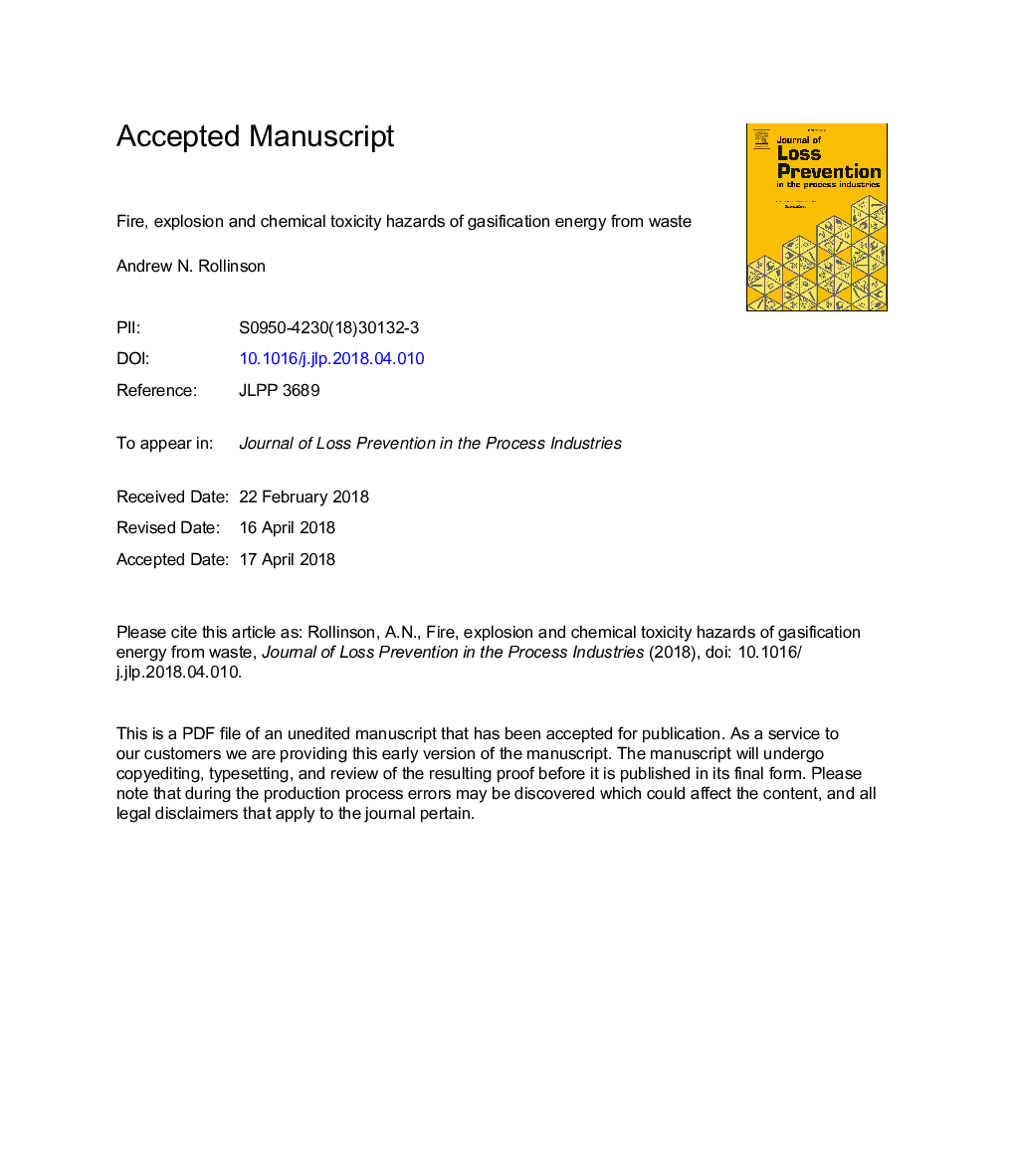| کد مقاله | کد نشریه | سال انتشار | مقاله انگلیسی | نسخه تمام متن |
|---|---|---|---|---|
| 6972896 | 1453254 | 2018 | 20 صفحه PDF | دانلود رایگان |
عنوان انگلیسی مقاله ISI
Fire, explosion and chemical toxicity hazards of gasification energy from waste
ترجمه فارسی عنوان
آتش سوزی، انفجار و سمیت شیمیایی خطرات گازسیون زباله
دانلود مقاله + سفارش ترجمه
دانلود مقاله ISI انگلیسی
رایگان برای ایرانیان
ترجمه چکیده
در سال های اخیر تعداد زیادی تلاش برای توسعه گازسیون زباله های جامد شهری صورت گرفته است. نتایج بسیار ناامید کننده بوده است، با بسیاری از مشخصات بالا و اغلب شکست های فاجعه بار. علل و تجزیه و تحلیل این شکست های فرایند هنوز در ادبیات بررسی شده توسط همکاران گزارش نشده است. در این مقاله این خطرات را با توجه به ترجیحات مدرن شناسایی و مورد بحث قرار می دهیم، با استفاده از مطالعات موردی و پیشینه های تاریخی برای کشف چالش های مهندسی که پیشگیری از از دست دادن در انرژی گازسیون از بخش زباله است، است. این نشان می دهد که خطرات زیادی وجود دارد: مخلوط گازهای قابل اشتعال، سمی و خورنده، سوزاندن مواد خوراکی ذخیره شده، چندین انفجار محیطی به علت فشار زیاد و کم فشار، همراه با بسیاری از منابع احتراق، و همچنین افزایش خطر در هنگام راه اندازی، خاموش یا در حین آزمایش. همچنین مشخص می کند که چگونه ریسک توسط ترجیحات برای نوآوری، فقدان درک ذینفعان، تمایل به کار در خروجی های بالا و عدم تمایل به یادگیری از تاریخ، افزایش می یابد.
موضوعات مرتبط
مهندسی و علوم پایه
مهندسی شیمی
بهداشت و امنیت شیمی
چکیده انگلیسی
In recent years there have been an increasing number of attempts to develop commercial-scale gasification of municipal solid waste. The results have been widely disappointing, with many high profile and often catastrophic failures. The causes and analyses of these process failures remain inadequately reported in peer-reviewed literature. This paper identifies and discusses these hazards in the context of modern preferences, using case studies and historic antecedents to explore the engineering challenges which underpin loss prevention in the gasification energy from waste sector. It shows that there are many hazards: flammable, toxic, and corrosive gas mixtures, the auto-ignition of stored feedstocks, multiple explosive atmospheres due to both overpressure and underpressure combined with many ignition sources, plus heightened risk at times of start-up, shut-down or during testing. It also identifies how risk is heightened by preferences for novelty, lack of stakeholder understanding, a desire to operate at high outputs, and a reluctance to learn from history.
ناشر
Database: Elsevier - ScienceDirect (ساینس دایرکت)
Journal: Journal of Loss Prevention in the Process Industries - Volume 54, July 2018, Pages 273-280
Journal: Journal of Loss Prevention in the Process Industries - Volume 54, July 2018, Pages 273-280
نویسندگان
Andrew N. Rollinson,
